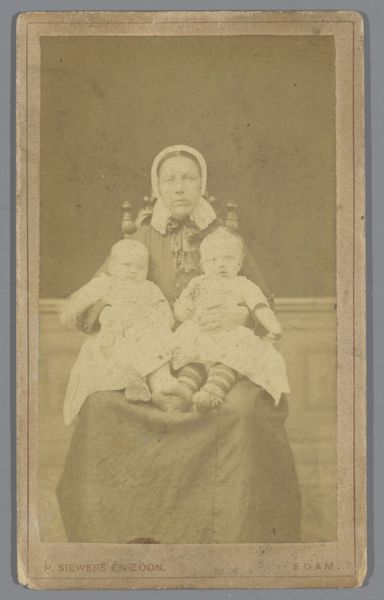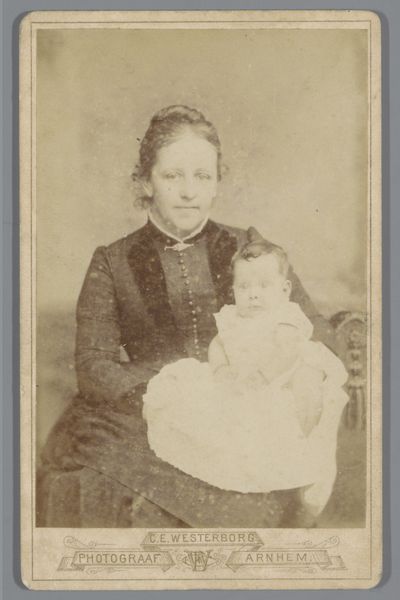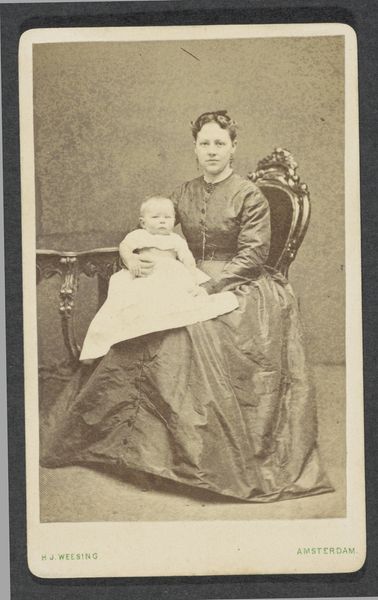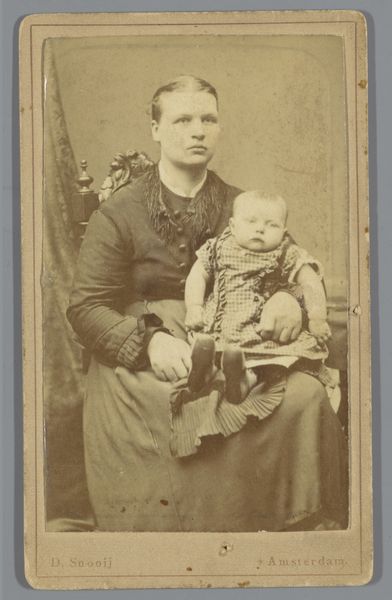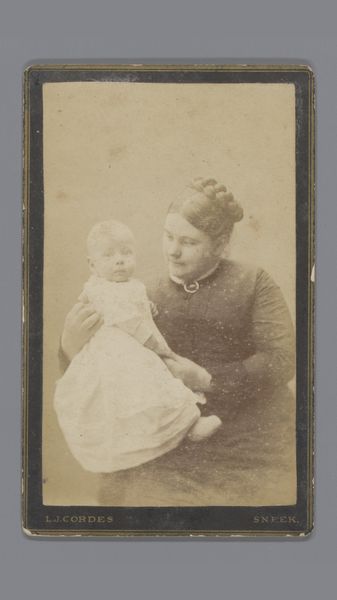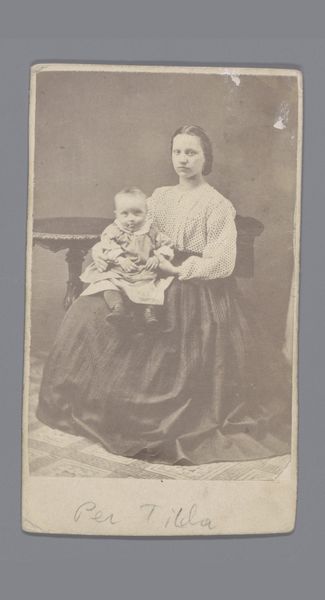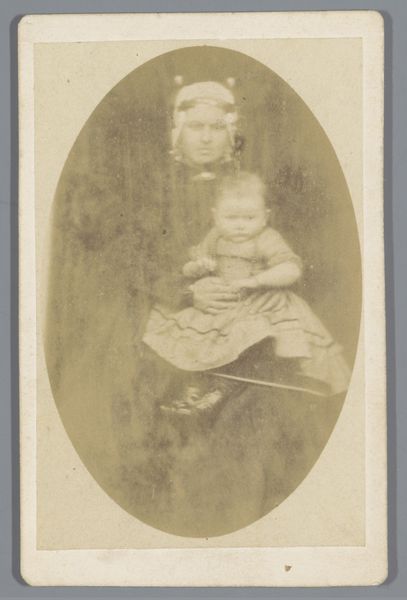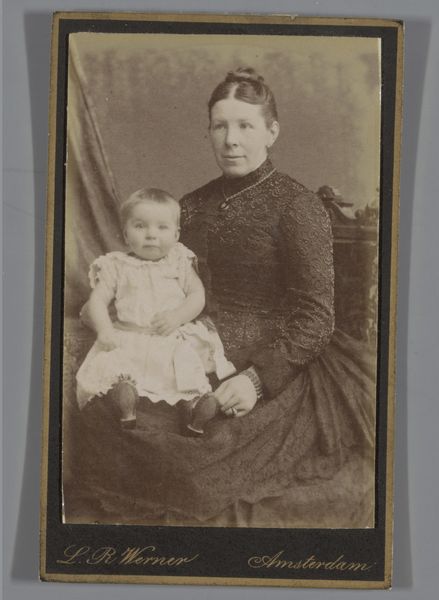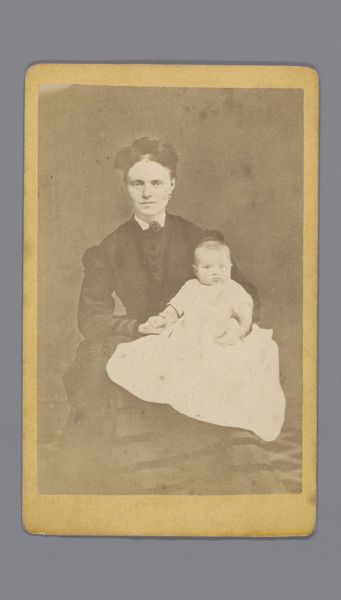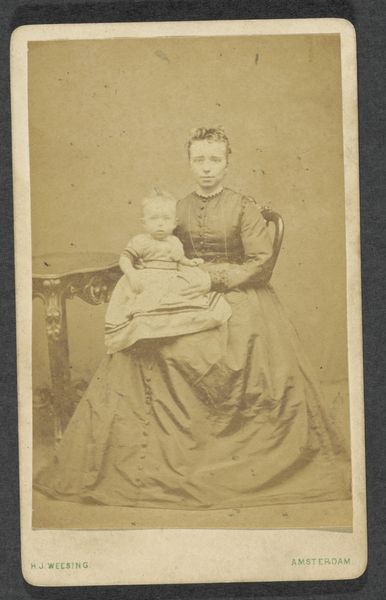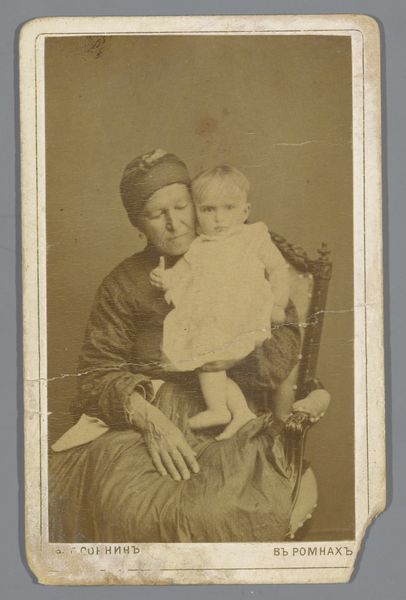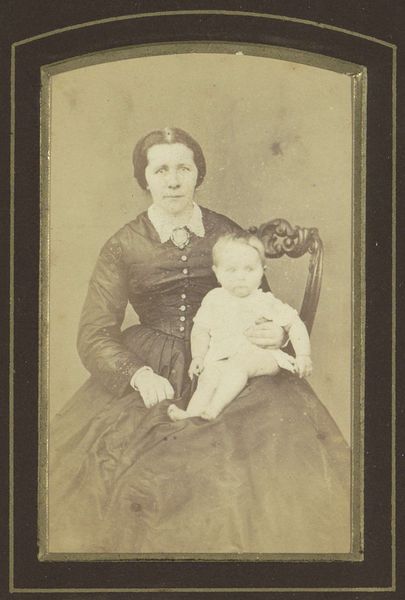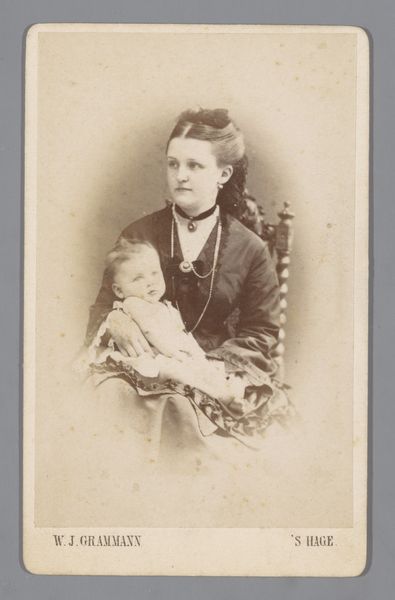
Portret van een onbekende vrouw met een kind op schoot 1871 - 1882
0:00
0:00
daguerreotype, c-print, photography, collotype, gelatin-silver-print, albumen-print
#
portrait
#
still-life-photography
#
mother
#
daguerreotype
#
c-print
#
photography
#
collotype
#
gelatin-silver-print
#
genre-painting
#
albumen-print
Dimensions: height 101 mm, width 62 mm
Copyright: Rijks Museum: Open Domain
Curator: Here we have "Portret van een onbekende vrouw met een kind op schoot"—that is, "Portrait of an unknown woman with a child in her lap"—an albumen print likely dating from 1871 to 1882. Editor: My first thought is how formally posed the subjects are. Everything, even the lighting, feels deliberate, as if striving for a timeless ideal of motherhood. Curator: Indeed. The very medium—albumen print—speaks to that deliberate approach. Think of the process involved, the careful coating of paper with egg whites... Each step demanding a craftsman's attention. It signifies status. Editor: And a certain type of control over the image. There's an undeniable relationship between the economic status required to produce such a photograph and the constructed, idealized representation it conveys. What I am getting from this piece is the idea that, while the image might show a tenderness in appearance, it mainly portrays an exercise of power and class. Curator: I can see that. The very stillness lends itself to such interpretations. I also feel how images from this era participate in the Victorian obsession with capturing likenesses, as well as symbols of familial continuity and heritage. Editor: The dress, too, points to that sense of curated identity, as it has simple but clear decorations. Three darker strips are displayed close to the base. But it's not just about capturing a person, but a type, a social position that one desires to signal as theirs. What do you read from the flower near the women's collar? Curator: Ah, the flower! Given the context and era, a flower can be interpreted as both symbol of love, hope, and innocence, as well as an element of memento mori: an encouragement to reflect on mortality—heightened even by the young age of the child. The delicate state of that bloom mirrors the fragility of life, urging us to treasure these fleeting moments. Editor: Perhaps... but isn't it fascinating how the material reality of photography – the albumen, the collodion, the darkroom processes - intertwines with these lofty ideas about love and mortality? This image then really encapsulates the confluence of artistry, craft, and commercial drive inherent in 19th-century photography. Curator: It certainly gives a deeper sense of how much work images carry to future generations. Thank you. Editor: Thanks to you! It always good to stop and think what went into these portraits and images.
Comments
No comments
Be the first to comment and join the conversation on the ultimate creative platform.
